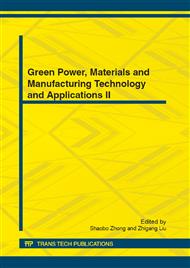p.872
p.877
p.882
p.887
p.893
p.898
p.903
p.909
p.914
Three-Degree-of-Freedom Step Motor Control Strategy Based on DSP
Abstract:
Based on the basic principles of analysis of vector control, given three-degree-of-freedom step motor vector control of software and hardware design based on TMS320F2812 for the control, from the simulation results show that: start and 0.2s faster when the speed reaches a given value, the torque increases instantly, but then resumed, when the speed is close to a given torque value becomes 0; 0.8s torque generated when the transition, 0.03s, the torque is stable at 200N • M, show that the system has a good rapid response capability and steady state performance. Realize the decoupling flux and torque control, which makes asynchronous motor DC motor with the same access to instant-response performance, and improve the control performance and system performance.
Info:
Periodical:
Pages:
893-897
Citation:
Online since:
November 2012
Authors:
Price:
Сopyright:
© 2012 Trans Tech Publications Ltd. All Rights Reserved
Share:
Citation:


